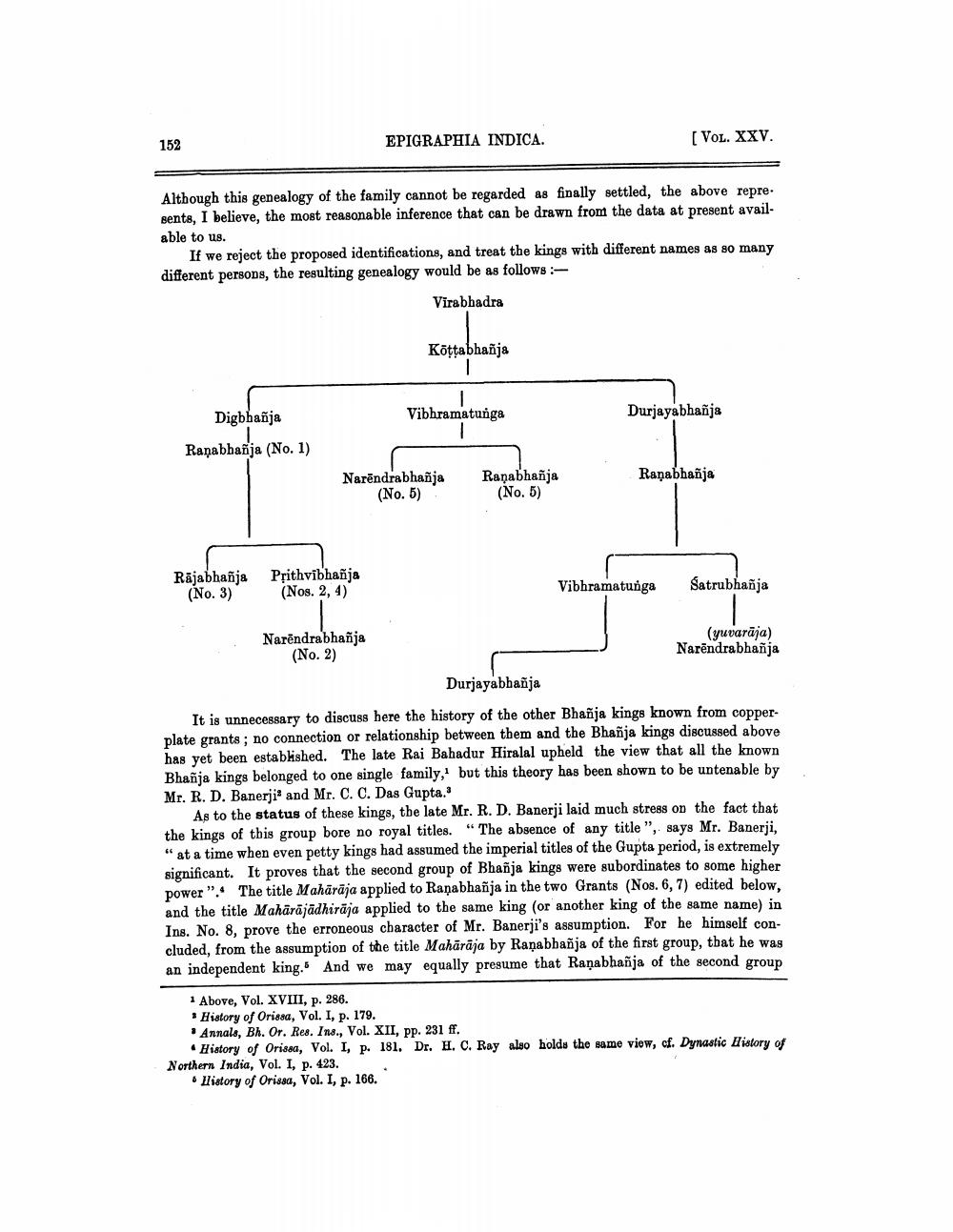________________
152
EPIGRAPHIA INDICA.
[VOL. XXV.
Although this genealogy of the family cannot be regarded as finally settled, the above repre. Bents, I believe, the most reasonable inference that can be drawn from the data at present available to us.
If we reject the proposed identifications, and treat the kings with different names as so many different persons, the resulting genealogy would be as follows :
Virabhadra
Köttabhañja
Digbbañja
Vibhramatunga
Durjayabhañja
Raņabbañja (No. 1)
Narendrabhañja
(No. 5)
Ranabhanja
(No. 5)
Raņabhañja
Rājabhañja
(No. 3)
Prithvibhañja
(Nos. 2, 4)
Vibhramatunga
Satrubhanja
Narendrabhañja
(No. 2)
(yuvarāja) Narendrabhañja
Durjayabbañja
It is unnecessary to discuss here the history of the other Bhañja kings known from copperplate grants; no connection or relationship between them and the Bhañja kings discussed above has yet been established. The late Rai Bahadur Hiralal upheld the view that all the known Bhañia kings belonged to one single family, but this theory has been shown to be untenable by Mr. R. D. Banerjie and Mr. C. C. Das Gupta.
As to the status of these kings, the late Mr. R. D. Banerji laid much stress on the fact that the kings of this group bore no royal titles." The absence of any title ", says Mr. Banerji, "at a time when even petty kings had assumed the imperial titles of the Gupta period, is extremely significant. It proves that the second group of Bhañja kings were subordinates to some higher power". The title Mahārāja applied to Raņabhañja in the two Grants (Nos. 6, 7) edited below, and the title Mahārājādhirāja applied to the same king (or another king of the same name) in Ins. No. 8, prove the erroneous character of Mr. Banerji's assumption. For he himself concluded, from the assumption of the title Mahārāja by Raņabhañja of the first group, that he was an independent king. And we may equally presume that Raņabhañja of the second group
1 Above, Vol. XVIII, p. 286. * History of Orissa, Vol. I, p. 179. * Annals, Bh. Or. Res. Ins., Vol. XII, pp. 231 ff.
• History of Orissa, Vol. I, p. 181. Dr. H. C. Ray also holds the same view, cf. Dynastic History of Northern India, Vol. I, p. 423.
• History of Orissa, Vol. I, p. 166.




